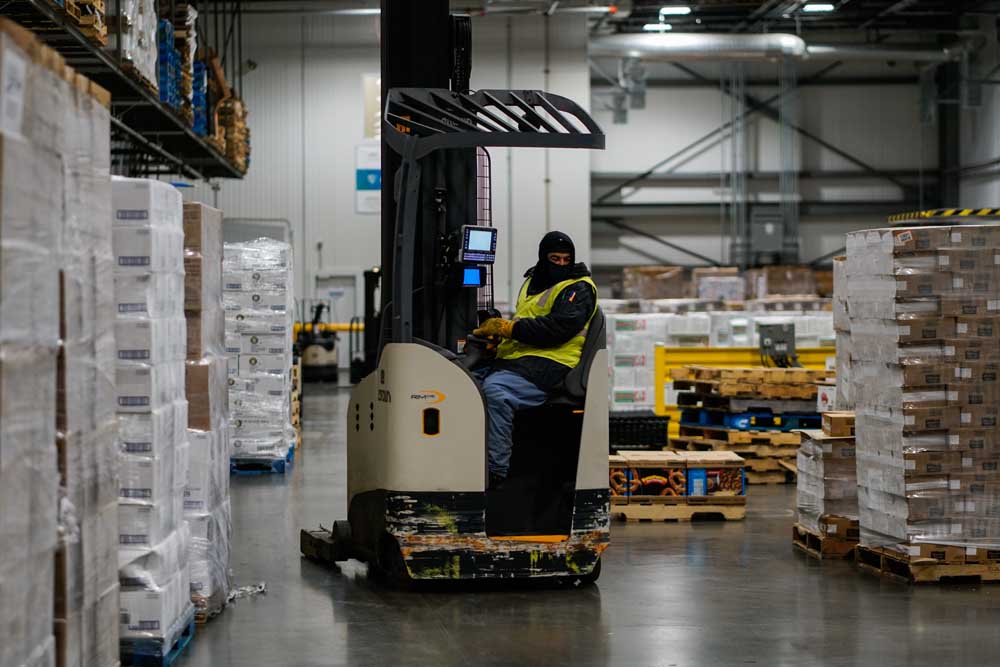Online food shopping is causing a cold-storage shortage
Published 12:00 am Tuesday, July 9, 2019

- Workers move and store inventory at Lineage Logistics at on Tuesday, June 25, 2019, in Vernon, California. (Kent Nishimura / Los Angeles Times/TNS)
Deep in a Vernon, California, warehouse, barrels of frozen mango puree from Mexico are stacked four stories high. Hams for Christmas are flash-frozen as June temperatures climb outside.
Inside this dimly lit chamber of the Lineage Logistics warehouse, it is 10 degrees below zero — cold enough to stop a ballpoint pen from rolling out ink and send an ominous chill through the soles of visitors’ shoes.
Lineage is the biggest player in the country’s cold storage industry, a business consumers seldom see but one that plays a crucial role in keeping edible fare fresh from the time it’s harvested until it reaches the kitchen fridge.
Now, changes in the way people shop have the “cold chain” scrambling to keep up.
Consumers, particularly younger buyers, are turning more and more to online grocery shopping and prepared meal services, which means more refrigerated warehouses are needed to keep that stuff cold.
To keep pace, the country will need 100 million square feet of new cold storage warehouse space over the next five years, according to a report by real estate brokerage CBRE.
It’s a particularly hot corner in the mushrooming warehouse business, fed by demand from Amazon.com and other e-commerce operations, which have been growing at lightning speed. Last month, investment manager Blackstone Group said it would pay $18.7 billion to buy a network of U.S. industrial warehouses from Singapore-based GLP, reported to be the largest private real estate transaction in history.
California is the biggest user of cold storage, with an existing 16.5 million square feet, and Los Angeles will be one of the beneficiaries of the coming boom in cold storage construction because of its large population and position as a global transportation hub.
The ports of Los Angeles and Long Beach, the nation’s biggest container port complex, have more than doubled their refrigerated container capacity in recent years to address increasing import and export demand for fresh and frozen food products, CBRE said.
Demand for cold storage is also being elevated by consumers’ growing aversion to chemical food preservatives.
“Now, even hamburger buns need delivery through the cold chain,” said Spencer Levy, chairman of Americas research for CBRE. “You are seeing an increase there as demand for nonpreservative food rises.”
One of the country’s largest agricultural regions is California’s Central Valley, where the cold chain starts in the field when crops such as raspberries and cherries are quickly chilled in cold water before being transported in refrigerated trucks to cold storage facilities.
Online grocery shopping is still in its infancy compared with other retail categories. Just 3% of U.S. grocery spending occurs online, while 20% of footwear and 40% of electronics spending occurs online.
The desire for online shopping is accelerating for both prepared meals and groceries, said Art Rasmussen, a CBRE broker who specializes in cold storage facility sales and leases.
Millennials, who are in their 20s and 30s, take it for granted that they can get what they want with a few mouse clicks. “Part of their lifestyle is quick delivery response to demand,” Rasmussen said. “Once that becomes a learned trait, it is very difficult to reverse.”
Although the baby boom generation isn’t a big user of online grocery shopping today, this age group is expected to use online grocery shopping more as the technology and experience improve, CBRE said.
Space in a typical 100,000-square-foot cold warehouse is about $150 a square foot per year, CBRE said, roughly triple the rent of a standard warehouse.
Lineage Logistics’ Vernon warehouse is one of its smaller facilities with a capacity of about 30 million pounds of goods, serving up to 1,000 trucks a day, company executive Kevin Marchetti said.






